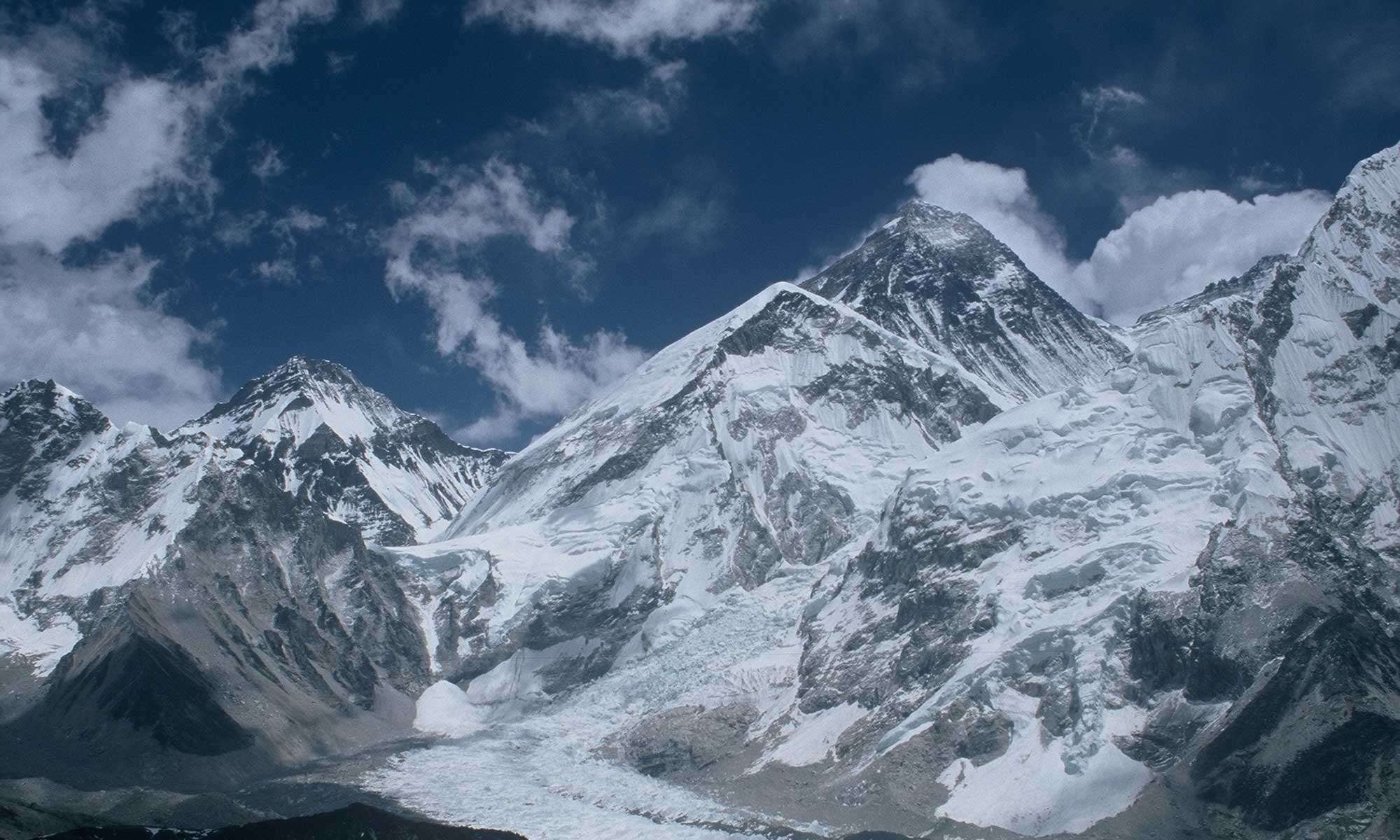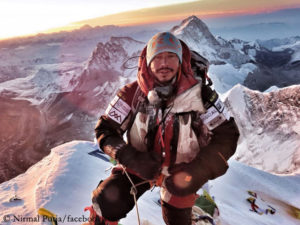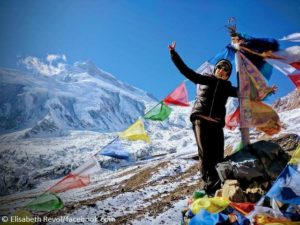Probably 22 May will soon appear in the Mount Everest record list: as the day with the most summit successes to date. Over 300 (!) climbers are said to have reached the highest point at 8,850 meters yesterday, the lion’s share from the Nepalese south side. Among them was also Nirmal, called “Nims” Purja, who according to his own words stood on the summit at 5.30 a.m. local time (with bottled oxygen) and afterwards “despite of the heavy traffic”, as he writes on Facebook, also on the top of Lhotse. He reached the summit at 3.45 p.m., he says. It was his eight-thousanders number four and five this season. In the meantime he has arrived at Makalu Base Camp. Nims wants to scale all 14 eight-thousanders in only seven months. If he succeeds on Makalu too, he will be on schedule with his “Mission Possible”, as he called his project.
Like in the sale
Purja also published on Facebook a picture of the summit ridge of Everest that reminds of a morning in summer sales. A long, almost uninterrupted queue of summit candidates is moving upwards. I still remember the outcry that the pictures of the German high-altitude climber Ralf Dujmovits triggered in 2012, showing a long queue in the Lhotse flank. As a consequence, the number of summit candidates was not reduced, but two lines of fixed ropes were laid parallel to each other – calling that “risk management”. Of course, this is not possible on the summit ridge. According to Gyanendra Shrestra, the government liaison officer in Everest Base camp, climbers reported on Wednesday that they had waited more than two hours (!) at the 8,749-meter-high South Summit.
Risk increases
It is almost a miracle that on Wednesday, according to previous findings, there was “only” one death to mourn: A 55-year-old American died near the South Summit. There could have been significantly more deaths. Because the following pattern runs through the deaths of the past years: The mountaineers leave their strength after the summit success, they become ever slower, their oxygen supplies run out, they die. If the route is crowded as it was on Wednesday, this risk increases dramatically.
No market without demand

Ash Routen, head of the adventure homepage “Explorersweb”, asked me today via Twitter for my opinion: “Is it ethical for trekking companies to accept payment from clients to then place them in high risk traffic jams at over 8000m?” I think it’s too easy to blame the operators alone. Surely the agencies bear a substantial part of the blame for these dangerous conditions. But I also appeal to the self-responsibility of the mountaineers, who should actually know what they are getting into. Anyone who buys into expeditions at dumping prices should not be surprised afterwards if the low budget is to the detriment of their safety. If there were no demand for cheap offers, there would be no market.
Topic safety disturbs
That brings us to the question of the government’s responsibility. The liaison officer in the base camp announced on Monday via Facebook that 297 people wanted to reach the summit on Wednesday. So they knew what was coming and knowingly accepted the pre-programmed traffic jams – including the risk.
The Chinese-Tibetan authorities on the north side show what is possible. They limited the number of permits to 300 this spring. In the end, they only issued 142 permits for foreign mountaineers. Fewer people on the mountain means not only less rubbish (this was the official reason given by the authorities), but also more safety.
Nepal has been talking about Everest regulation for decades, but almost nothing has been happening. With mass mountain tourism a lot of money can be earned. The issue of safety is rather disturbing. Even an accident like the ice avalanche in the Khumbu Icefall in 2014, which killed 16 Nepalese climbers, did not lead to a rethink.
Revol and Mohr summited without bottled oxygen
Also on today’s Thursday, numerous Everest summit successes were reported from the north and south – although not as many as on Wednesday. According to one of her sponsors, the French Elisabeth Revol summited Everest without bottled oxygen today. In 2018, Revol was the first woman to scale Nanga Parbat in winter. Her Polish team mate Tomasz Mackiewicz who was suffering from high altitude sickness, had died during the descent. Revol had been rescued.
According to consistent reports, Juan Pablo Mohr today became the first Chilean to reach the summit of Everest without bottled oxygen. A week ago he had already scaled Lhotse without breathing mask, along with the Spaniard Sergi Mingote.
Two Everest widows on the top
Also on Thursday the Sherpanis Nima Doma Sherpa and Furdiki Sherpa reached – with bottled oxygen – the summit. Their husbands had died on Everest in 2013 and 2014 respectively. “We are doing our expedition for the respect of our late husbands because they were mountaineers too,” Nima Doma had replied to my question about the purpose of their project in January. “And we want to motivate all the widows.”
Update 11.30 p.m.: Three more deaths are reported from Everest. On the south side two women from India died (one near the South Summit, one near the South Col, both on their descent from the top), on the north side a member of a Swiss expedition (at 8,600 m, on his descent from the summit). R.I.P.




